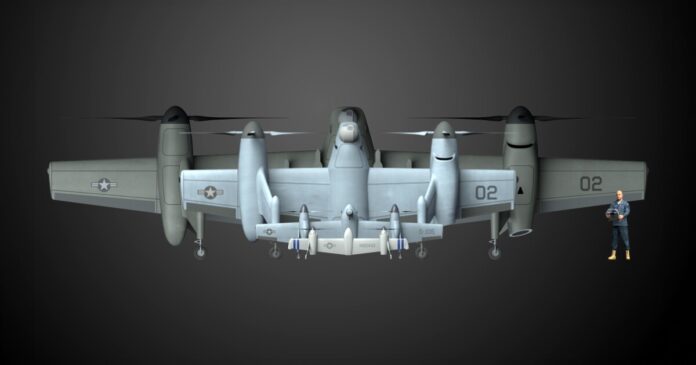Lockheed Martin subsidiary Sikorsky is blurring the line between helicopter and fixed-wing aircraft with its new Nomad family of Uncrewed Aerial Systems (UAS) that combine the versatility of a helicopter with the speed and endurance of a fixed-wing aircraft.
If “rotor blown wing” is a term you run across a lot, then you’ve been hanging around too many aerospace engineers and should get out more. However, it is not only seen in the field as an innovation that not only increases the capabilities of VTOL aircraft, but also one that is scalable enough to produce a whole new family of drones.
A rotor blown wing is a configuration where twin rotors are mounted on a long wing so that the airflow blows over the wing’s surface with enough force to generate additional lift during vertical flight. This way, the wing not only helps in taking off vertically, but provides lift during the transition from vertical to horizontal flight.
Nomad
As a result, a rotor blown wing aircraft has the take off and landing characteristics of a helicopter combined with the speed and endurance of a fixed-wing plane. It’s also inherently scalable, which means it readily lends itself to both larger and smaller variants.
Sikorsky seems to have enough confidence in the technology to announce an entire family of rotor blown wing aircraft called Nomad. These are designed for military missions, including Intelligence, Surveillance, Reconnaissance and Targeting (ISR-T); contested logistics resupply, light attack; maritime patrol; and persistent communications as well as civilian Search And Rescue (SAR), forestry, firefighting monitoring, humanitarian response, and pipeline surveillance. Their VTOL capability also makes them suitable for quickly deploying forces to dispersed areas without runways.
According to Sikorsky, the Nomad family is made up of Group 3 small and medium drones up to 1,320 lb (599 kg) and Group 4-5 large drones up to the size of a Black Hawk helicopter. The smallest, the Nomad 50 prototype with a wingspan of 10.3 ft (3.14 m) and weighing 115 lb (52 kg), has already been flight tested this year. This will be followed by the Nomad 100 with a wingspan of 18 ft (5.5 m) – other variants are also in the pipeline.
Lockheed Martin
The smaller Nomads will be powered by hybrid electric drivetrains, while the larger ones will use conventional engines. In addition, the Nomads will use Lockheed’s Matrix digital co-pilot that turns fixed and rotor wing aircraft into autonomous platforms. This is capable of handling all aspects of flight, from take off to power down, and can carry out obstacle and threat avoidance.
“We use the term ‘family’ to point to a key attribute of the design; its ability to be scaled in size from a small Group 3 UAS to the footprint equivalent of a Black Hawk helicopter,” said Rich Benton, Sikorsky vice president and general manager. “The resulting Nomad family of drones will be adaptable, go-anywhere, runway independent aircraft capable of land and sea-based missions across defense, national security, forestry and civilian organizations. Nomads are a force multiplier, complementing the missions of aircraft such as the Black Hawk to retain the strategic advantage in the Indo-Pacific and across broader regions.”
Source: Lockheed Martin


